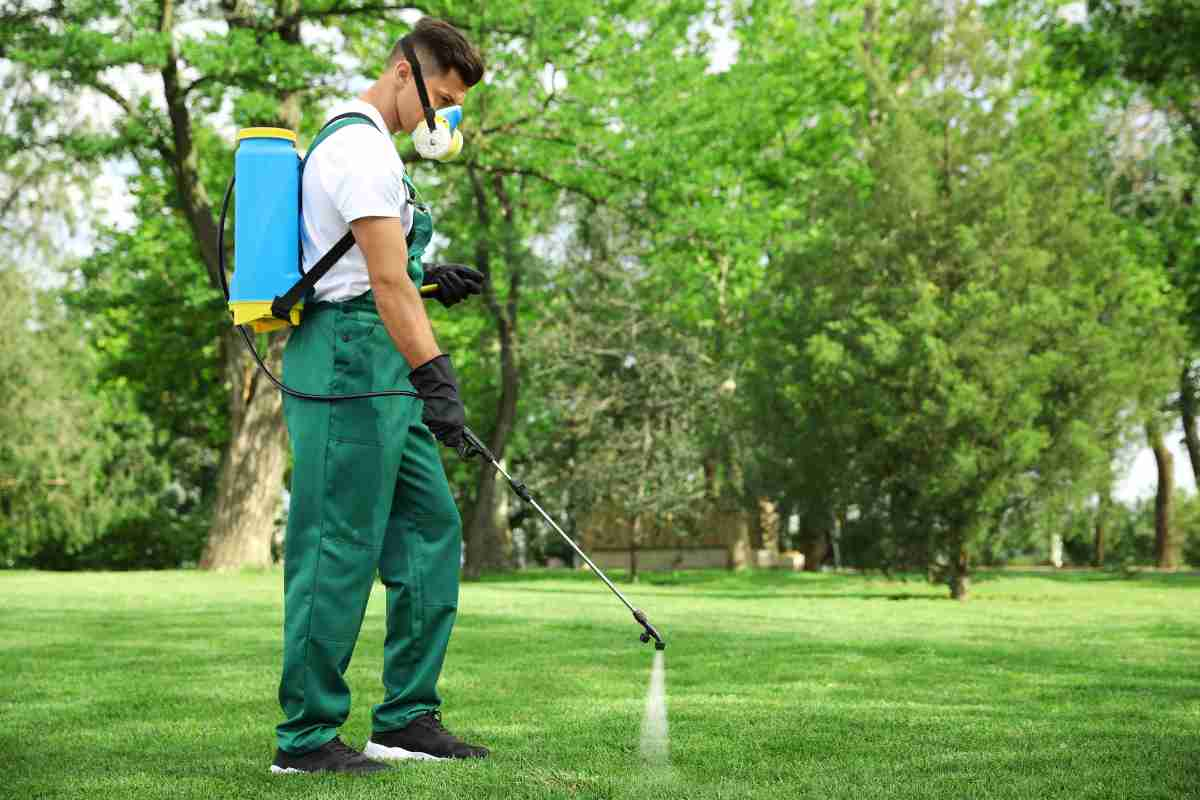Comprehensive Guide to Outdoor Flea Control CT for Homeowners
Beat Connecticut fleas! Protect your home & pets from itchy infestations. Learn how to control fleas outdoors & enjoy a pest-free yard.

Fleas can be a persistent and irritating problem for homeowners, especially those with pets or lush gardens. These tiny pests can cause discomfort for both humans and animals, and if left unchecked, they can lead to infestations inside your home. In Connecticut, where the climate is perfect for fleas to thrive, taking preventive and proactive measures is crucial.
This guide will walk you through the essential steps for controlling fleas outdoors, helping you maintain a flea-free environment around your home.
Understand the Flea Life Cycle
To manage fleas successfully, it’s crucial to understand their life cycle. Fleas go through four stages, and knowing how each stage works can help you focus your control efforts effectively.
Eggs
Adult fleas lay eggs on their hosts, but they often fall off into the surrounding environment, such as your yard.
Larvae
Once hatched, flea larvae feed on organic matter and flea dirt (dried blood) in the environment.
Pupae
Flea larvae spin cocoons and enter the pupal stage, where they can remain dormant for weeks to months until conditions are right.
Adults
Adult fleas emerge from pupae when they sense warmth, vibrations, and carbon dioxide, indicating a host is nearby.
By targeting fleas at each stage using organic, traditional, or hybrid treatments, professional outdoor flea control CT services can significantly reduce flea numbers.
Identify Flea Habitats
Fleas prefer warm, humid environments with plenty of shade. They thrive in areas where pets and wildlife frequently visit. Common flea habitats include:
Shady Spots in Your Yard
Fleas tend to gather in shaded areas to avoid direct sunlight. These include parts of your garden under large trees or places shielded by fences and walls.
Under Porches and Decks
The dark and damp conditions under porches and decks make them ideal hiding and breeding spots for fleas.
Leaf Litter and Tall Grass
Accumulated piles of leaves and untended patches of grass create a haven for fleas to lay eggs and multiply.
By identifying these habitats, you can focus your control efforts where they’ll be most effective.
Maintain Your Lawn to Control Fleas
Keeping your lawn in good condition is one of the simplest and most effective ways to control fleas outdoors. Consider these key practices:
Mow Your Lawn Frequently
Keep your grass trimmed to a reasonable length. Shorter grass exposes more soil to sunlight, which fleas dislike. This reduces the number of shady spots where fleas can hide and breed, making your yard less attractive to them.
Remove Debris
Clear away piles of leaves, grass clippings, and other yard debris that provide shelter for fleas. Regularly rake and dispose of these materials to minimize flea habitats, reducing the chances of flea populations establishing in your yard.
Trim Overgrown Vegetation
Trim back bushes, shrubs, and trees to allow more sunlight into shaded areas. This can help create a less hospitable environment for fleas and prevent them from using these areas as breeding grounds.
Water Wisely
Fleas thrive in humid conditions, so it’s important not to overwater your lawn. Ensure your yard has good drainage to prevent damp, flea-friendly conditions, which can be achieved by adjusting your watering schedule based on rainfall and soil type.
With regular lawn upkeep, you create an environment that is less conducive to flea infestations. This helps keep your outdoor spaces comfortable and pest-free.
Create a Barrier Around Your Home
Creating a barrier around your home is an effective way to keep fleas from moving indoors. Here are some strategies to consider:
Mulch Wisely
Use cedar mulch in flower beds and around your yard. Cedar is a natural flea repellent and can help keep these pests at bay.
Install Gravel or Wood Chips
Create a barrier using gravel or wood chips around the perimeter of your home. This can deter fleas from migrating indoors.
Seal Entry Points
Inspect your home for gaps and cracks that might allow fleas to enter. Seal these entry points to keep fleas out.
By implementing these strategies, you establish a protective barrier that reduces the likelihood of fleas invading your living space.
Use Flea-Repellent Plants in Your Garden
Incorporating flea-repellent plants into your garden is a natural way to keep these pests away. Some plants that help repel fleas include:
Lavender
The strong fragrance of lavender masks scents that attract fleas, making it a perfect choice for garden borders and pathways.
Mint
Mint effectively repels fleas and other insects with its aromatic oils, which act as a natural deterrent.
Rosemary
While popular for cooking, rosemary's woody scent naturally deters fleas, serving as an aromatic barrier in your garden.
Chrysanthemum
These flowers contain pyrethrum, a natural insecticide. The vibrant blooms add color to your garden while protecting against fleas and other pests.
By strategically planting these flea-repellent varieties, you can naturally enhance your garden’s beauty while creating a protective barrier that keeps fleas away.
Implement Natural Flea Control Methods
If you prefer a more natural approach to flea control, several options can help reduce flea populations without using harsh chemicals.
Diatomaceous Earth
Diatomaceous earth is a natural powder made from crushed fossils of marine organisms. It works by dehydrating fleas, leading to their death. Sprinkle food-grade diatomaceous earth around your yard, focusing on flea-prone areas.
Nematodes
Beneficial nematodes are microscopic worms that prey on flea larvae and other soil-dwelling pests. You can introduce nematodes to your yard by mixing them with water and applying them to the soil. They’re a natural and effective way to reduce flea populations.
Essential Oils
Certain essential oils can repel fleas. Mix oils like eucalyptus, lemongrass, and citronella with water and spray around your yard. Be cautious when using essential oils if you have pets, as some oils can be toxic to animals.
By utilizing these natural flea control methods, you can effectively manage flea populations in your yard while maintaining an eco-friendly approach to pest control.
Explore Chemical Flea Control Options
While natural methods are effective, sometimes chemical treatments are necessary for severe infestations. Here are some chemical control options:
Insect Growth Regulators (IGRs)
IGRs disrupt the flea life cycle by preventing eggs and larvae from developing into adults. They’re often combined with adulticides for comprehensive flea control. Apply IGRs according to the manufacturer’s instructions, focusing on flea hotspots.
Insecticides
Insecticides can kill adult fleas and provide immediate relief from infestations. Choose insecticides labeled for outdoor use and safe for your specific needs. Follow all safety guidelines and application instructions to protect your family and pets.
For severe infestations, consider hiring a professional pest control service. They have access to more potent treatments and can provide tailored solutions for your property.
Protect Your Pets from Fleas
Since pets are often the primary hosts for fleas, protecting them is essential for overall flea control. Here’s how you can protect your pets:

Regular Grooming
Brush your pets regularly to remove fleas and flea dirt. Use a flea comb to catch any fleas hiding in your pet’s fur.
Flea Preventatives
Consult your veterinarian about the best flea preventatives for your pets. Options include topical treatments, oral medications, and flea collars. Consistent use of preventatives can keep fleas off your pets and out of your home.
Clean Pet Bedding and Toys
Wash your pet’s bedding and toys regularly in hot water to kill any fleas or eggs. This helps reduce the flea population and keeps your pets comfortable.
By prioritizing your pet's flea prevention and care, you can significantly reduce the risk of infestations and ensure their health and comfort.
Monitor Flea Activity in Your Yard
Regular monitoring of flea activity in your yard is crucial for staying ahead of potential infestations. Using flea traps can help you gauge the effectiveness of your flea control measures by capturing fleas and indicating their presence in specific areas. It's also important to regularly check your pets and family members for signs of fleas, such as itching and red spots, to catch any issues early and prevent them from escalating.
Moreover, keep a flea diary to track where and when you observe fleas, helping you identify patterns and adjust your control strategies accordingly. By maintaining vigilance and actively monitoring flea activity, you can quickly address problem areas and prevent future infestations.
Implement Long-Term Flea Prevention Strategies
To maintain a yard free of fleas over the long term, it's essential to adopt strategies that involve your community and consistent yard care. Educating your neighbors about flea control can create a collective effort against these pests, as fleas easily move between yards. Sharing tips and strategies with neighbors helps ensure that the entire community benefits from reduced flea populations.
Additionally, adjust your flea control methods based on seasonal changes, as flea populations typically rise in warmer months. By increasing your efforts during these times, you can effectively manage and prevent flea infestations throughout the year.
Parting Words
Creating a flea-free environment around your home enhances both comfort and health for your family and pets. By taking a proactive approach and using a mix of natural and professional strategies, you can keep these pesky invaders at bay. Enjoy the peace of mind that comes with a well-maintained outdoor space.
To protect your home effectively, start integrating these strategies. A little effort now can go a long way in maintaining a safe haven for you and your loved ones.


Comments ()